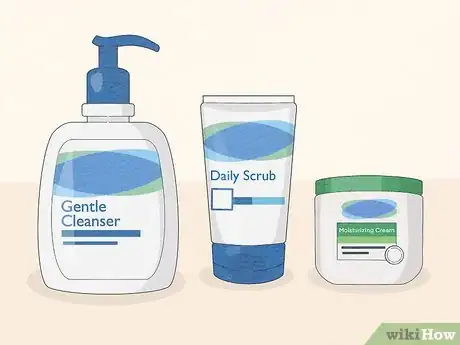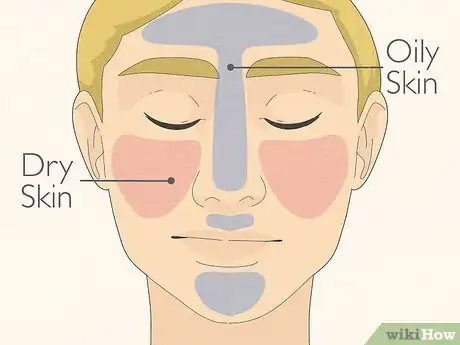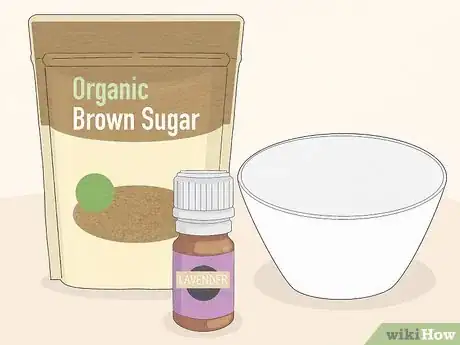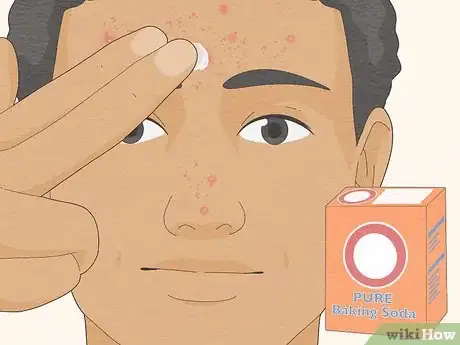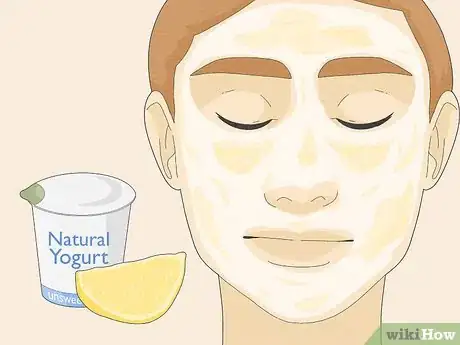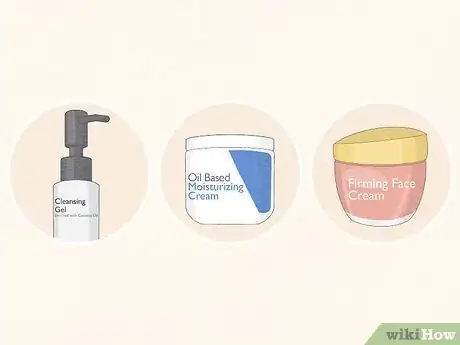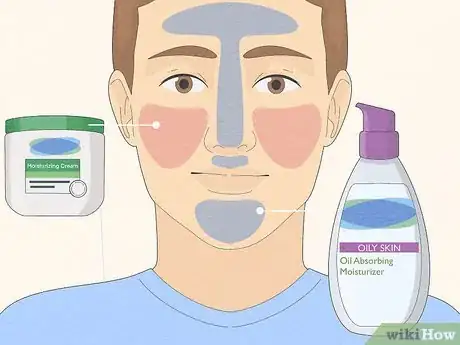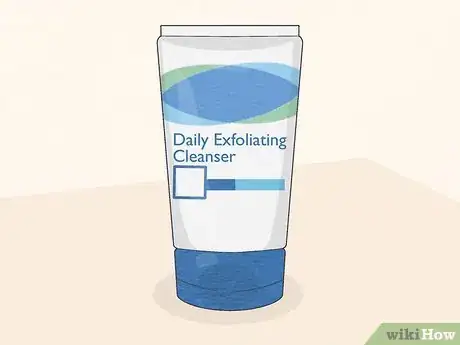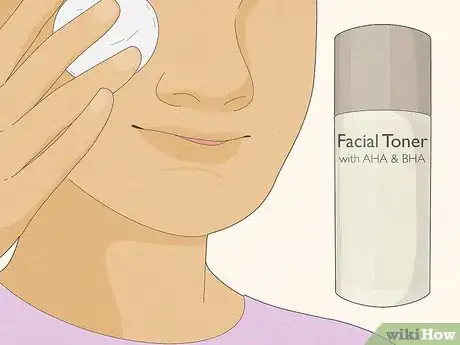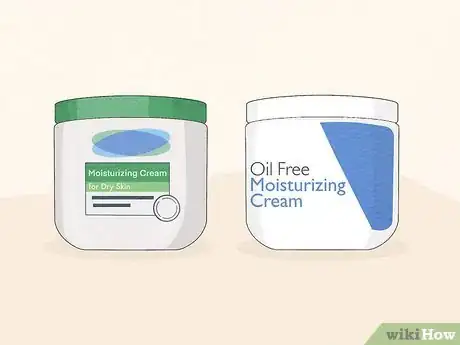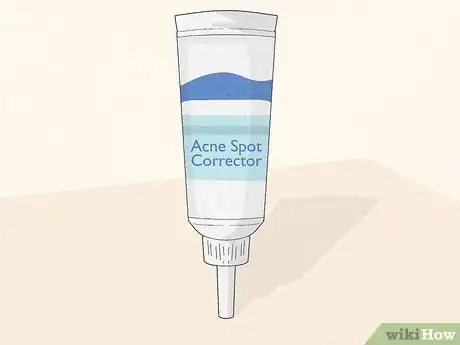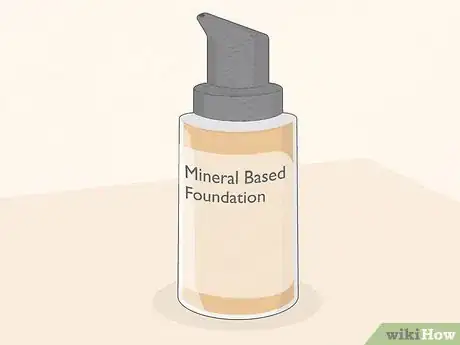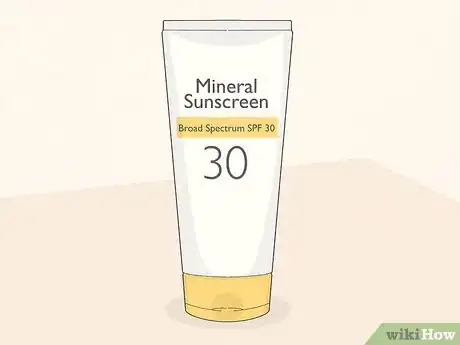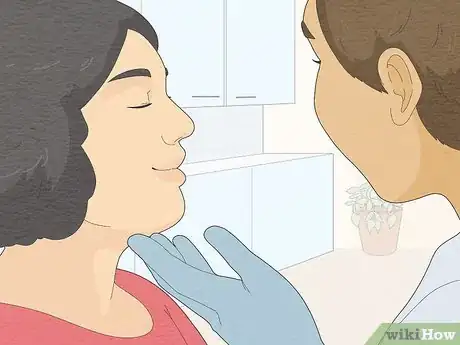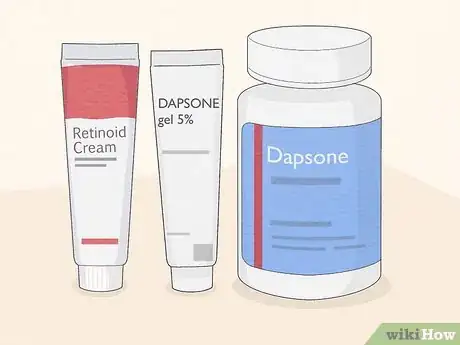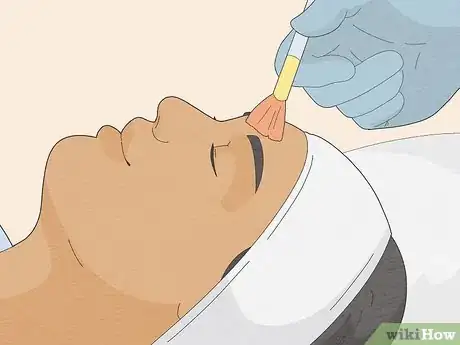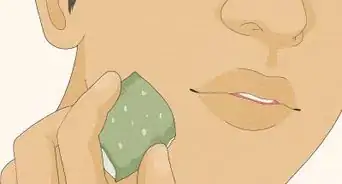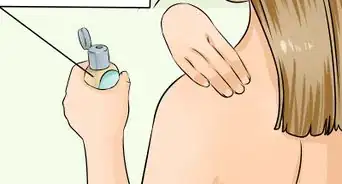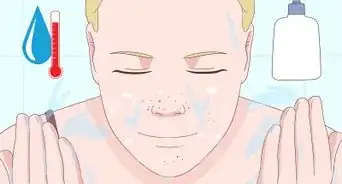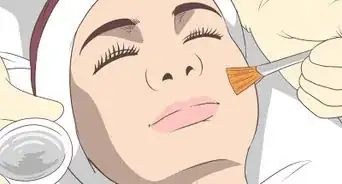This article was co-authored by Laura Marusinec, MD. Dr. Marusinec is a board certified Pediatrician at the Children's Hospital of Wisconsin, where she is on the Clinical Practice Council. She received her M.D. from the Medical College of Wisconsin School of Medicine in 1995 and completed her residency at the Medical College of Wisconsin in Pediatrics in 1998. She is a member of the American Medical Writers Association and the Society for Pediatric Urgent Care.
There are 10 references cited in this article, which can be found at the bottom of the page.
This article has been viewed 255,936 times.
Combination skin means you have two or more different skin types on different areas of your face at one time. Your skin may be dry or flaky on certain parts of your face, and you may also have an oily T-zone, which runs along the center of your face, nose, chin, and forehead. As well, you may have combination skin if you have other skin issues, like wrinkles, breakouts, or rosacea on your face at the same time.[1] It can be difficult to care for combination skin, but it is not impossible. To care for combination skin properly, you need to find products that work well on the different skin types present on your face, and that do not irritate your skin.
Steps
Using Natural Remedies
-
1Stick to a consistent skin care regimen. A key part of tackling combination skin is committing to a daily and nightly skin care regimen. This means using the same products 1-2 times a day for at least a month to let your skin get used to the regimen.
- Clean your face once or twice daily with a cleanser.
- Exfoliate sparingly, sometimes only once a week.[2]
- Finish with a moisturizer once in the morning and once in the evening.
-
2Focus on treating different areas of your face. With this skin type, you will need to focus on treating two skin types. You will need to moisturize the dry areas of your face and reduce excess oil on the oily areas of your face.[3] Often, the oily area of your face will be your T-zone (your forehead, nose, above your mouth, and chin). Rather than treat your whole face with one product, you will need to treat specific areas of your face, based on the skin type.[4]
- For example, if you are experiencing a breakout on your forehead, and you know the skin on your forehead tends to get oily, use a spot treatment to tackle the oil just on your forehead. If the skin on your cheeks tend to get dry and irritated, use a moisturizing product only on that area.
Advertisement -
3Use an oil based cleanser on dry skin. Cleansers made from natural oils like coconut oil and olive oil are ideal for dry to very dry skin, and may only work well on the dry areas of your combination skin. Though oil based cleansers are not detrimental to your skin, they are not recommended for oily skin. You may want to try making several different oil based cleansers for a trial period. If you start to break out or have a negative reaction, you may want to consider using a professional cleanser that contains other ingredients to better treat oily skin. Start with a very simple all natural honey cleanser:[5]
- You will need three tablespoons honey, ½ cup vegetable glycerine (available at most health food stores) and two tablespoons liquid castile soap.
- Mix the ingredients together in a large bowl. Pour it into an empty bottle for easy application.
- Apply a small amount to your face and neck. Use your fingers to massage it into your skin for 30 seconds to 1 minute. This will help to loosen any dirt or debris on the surface of your skin. Once finished cleaning, rinse your face with warm water and pat dry with a towel.
- You can also try an oil based cleanser by using coconut oil or olive oil and a warm washcloth. Look for organic extra virgin coconut oil or olive oil to ensure you are using the purest natural products for your face.[6]
- Use your fingertips to massage the oil on your face for 30 seconds. Then, wet the washcloth in warm water and press the warm towel to your face. Keep the oil on your face for 15-30 seconds and then gently use the cloth to remove the oil. Avoid scrubbing your face, simply wipe off the oil.
-
4Create a natural exfoliant. You can exfoliate your skin to remove dead skin cells after you have cleaned your face, especially if you have areas of your face that are dry and clogged with dead skin cells. Exfoliating will also prevent blocked pores and dull looking skin. Start by exfoliating with a homemade scrub once to twice a week.[7]
- Exfoliation is not recommended for people with sensitive skin. Use exfoliation sparingly. To test, try on a small patch of skin. If it does not hurt or irritate your skin, you can use it on the rest of your face.
- Most homemade scrubs use brown sugar as a base, as it is considered gentler on your skin than granulated sugar. You can also use natural oils, like patchouli, tea tree, and lavender, to give your skin a healthy glow.
- For sensitive skin, make a mixture of one cup brown sugar, one cup ground oatmeal, and ½ cup honey. Rub it on your face for 30 seconds to a minute to remove dead skin cells and give your skin a gentle scrub.
- Make an exfoliant for oily skin by combining one tablespoon sea salt, one tablespoon honey, and a few drops of patchouli oil. Wet your skin and then gently apply the exfoliant with your fingers. Massage the mixture into your skin for 30 seconds to a minute and then rinse it off with warm water.
- Create an exfoliating scrub by combining two tablespoons of brown sugar, one tablespoon of finely ground coffee grinds, and one tablespoon of lemon juice. Add a teaspoon of honey for an added benefit. Apply the scrub to your face for 30 seconds to a minute and then rinse it off with warm water.
-
5Apply a natural spot treatment. To treat blemishes in your T-zone area and prevent new acne from appearing in this area, try using spot treatments. This will allow you to target acne prone areas and avoid irritating other parts of your face. There are several good natural spot treatments, including:
- Baking soda: This is a cheap and effective spot treatment that is easy to make. Baking soda will reduce inflammation from a pimple and help prevent future breakouts. It’s also a great exfoliator and will get rid of dead skin cells that can build up on the surface of your skin. Take a few teaspoons of baking soda and mix it with warm water until it creates a thick paste. Put the paste on dry areas of your skin, or directly on a blemish. For the first several times of use, leave the paste on for 10 to 15 minutes. Increase the time gradually, up to an hour or overnight, as your skin gets used to this spot treatment.
- Diluted tea tree oil: This essential oil is antibacterial and a powerful remedy for acne. But it must be diluted, as it can actually cause more damage to your skin if applied directly to a blemish. Make a tea tree spot treatment by mixing five to ten drops of tea tree oil with ¼ cup water in a bowl. Use a cotton ball to apply to treatment to acne prone areas or blemishes on your skin. You can leave the treatment on under your foundation and reapply it during the day.
- Lemon juice: This spot treatment is based on the natural antibacterial and astringent properties of lemon juice. Use fresh squeezed lemon juice or packaged lemon juice from the grocery store. Put three teaspoons of lemon juice in a bowl and use a cotton ball to apply it to acne prone areas or a blemish. Keep it on for 15 minutes to an hour to let the lemon juice absorb into your skin.
- Aloe: If you have access to an aloe plant, take advantage of the soothing properties of this plant and cut off a piece. Squeeze the juice from the stalk onto a blemish or an acne prone area of your skin. You can apply this gel to your skin several times a day. You can also buy organic aloe gel at your local health food store. Look for aloe products with little to no added ingredients.
-
6Use an organic face mask. Apply a face mask once a week to freshen up your complexion and give your face a soothing treatment. Many organic, all natural face masks use a combination of fruits and oils to make a great paste for your face.
- Throw a banana, half a papaya, two carrots, and a cup of honey in a blender. Blend the ingredients together until they form a thick paste. Apply this paste on your face for 20 minutes. Then, rinse it off with lukewarm water.[8]
- Make a lemon yogurt face mask by combining one tablespoon natural yogurt, one teaspoon lemon juice, and two drops of essential lemon oil. Apply the mask to your face for 10 minutes. Then, wash it off with warm water.[9]
Using Professional Products
-
1Follow a consistent skin care regimen. Committing to a daily and nightly skin care regimen will help your skin get used to certain products and ensure your combination skin looks healthy and blemish free.[10]
- Clean your skin twice a day (morning and night) with a cleanser to remove debris on the surface of your skin.
- Apply an oil based moisturizer on dry areas to keep your skin from drying out.
- If you are trying to lessen the appearance of wrinkles, apply a firming mask or firming cream at night before bed.
-
2Treat each skin type separately. Rather than apply one treatment on your entire face, focus on targeting the different skin types on your face. You will need to address dry areas on your face separately from any oily or acne prone areas on your face.
-
3Use an exfoliating cleanser. Look for a gel-based or foaming cleanser to prevent dryness and inflammation. Avoid cleansers that contain irritants or fragrance, and always massage the cleanser gently on your skin in small circles. Clean your face every morning and every night for at least 30 seconds to a minute.[11]
- Exfoliation is not recommended for people with sensitive skin. Use exfoliation sparingly. To test, try on a small patch of skin. If it does not hurt or irritate your skin, you can use it on the rest of your face.
- A lightweight lotion cleanser is good for people with dry skin and rosacea. Stay away from bar soaps or bar cleansers, as the ingredients in bar soaps can clog your pores and dry out or irritate your skin. Good labels to look for include “gentle” and “for sensitive skin.”
-
4Consider a toner. Look for a toner without any irritants, such as alcohol, witch hazel, menthol, synthetic or natural fragrance, or citrus based oils. A good toner is water-based and has anti-inflammatory agents and antioxidants that will help your skin repair itself.[12]
- A list of good antioxidants in toners can be found here.
- Using a cleanser or toner that contains beta hydroxy acid (BHA) like salicylic acid, or alpha hydroxy acid (AHA) like glycolic acid can help to reveal healthy skin hiding underneath acne prone skin. Look for a product that contains these elements in a gel or liquid for oily skin or combination skin.[13]
-
5Moisturize with an oil based product. Go for botanical oil based moisturizers to keep your skin from drying out. Your skin is made up of oils, so to balance oil production, you should apply high quality oils to your skin. Use oil-free or non comedogenic products if you have sensitive or oily skin.
-
6Use a spot treatment for each skin type on your face. Be diligent about treating each skin type on your face separately. It can seem like a lot to remember, and a lot of products to keep on hand. But in the end, your combination skin will thank you for paying attention to the needs of the different skin types on your face.
- Use lotion or cream based moisturizers on dry patches. Use oil-free or non comedogenic lotion and cream moisturizers on oily patches.
- Hydrate any dry areas on your face before you apply foundation or makeup to your entire face. This will prevent dry patches from forming.
- Apply acne spot treatments to any blemishes or acne scars and avoid applying the treatment to every area of your face.
-
7Try an all natural mineral based foundation. Once you clean, exfoliate, tone, and moisturize your face, the last thing you want to do is clog your pores with your make up. Using an all-natural mineral foundation will keep your skin hydrated and prevent oil from forming in your T-zone. Look for foundations that state they are for combination skin.
- Do not go to sleep wearing your makeup.
- If possible, go for a foundation that also contains SPF to protect your skin from sun damage.
-
8Wear sunscreen every day. If you aren’t already using a foundation that contains SPF, you should apply sunscreen every day, year-round to protect your skin from the signs of aging. Wrinkles, sunspots, and discoloration can be prevented with the simple application of a light, SPF 30 sunscreen.[14]
- Use a sunscreen that contains active ingredients like titanium dioxide or zinc oxide for sensitive skin and rosacea.
Talking to a Dermatologist
-
1Get a referral for a dermatologist. Ask your family doctor for a referral for a dermatologist that specializes in treating combination skin. You can also look up dermatologists in your area on the American Academy of Dermatology. Look at the background, expertise, and rates for each dermatologist and set up an initial consultation to see if the dermatologist is right for you.[15]
- Ask about different treatment options for acne: topical ointments, oral antibiotics, chemical peels, and light and laser treatments are a few examples.
- Ask your dermatologist for recommendations for cleansers, moisturizers, exfoliants, toners, and sunscreen.
- You can also ask friends or family for a recommendation. Check how long they have been seeing their dermatologist, how they feel the staff treats the patients at the office, and how accessible they felt information on procedures or treatments for combination skin issues was through the dermatologist.
-
2Ask about topical medications. If over the counter products are not helping with your acne, your dermatologist may give you a prescription for a topical medication for your skin issues. There are three main types:[16]
- Retinoids: These drugs can come in the form of a lotion, a gel, or a cream. Your dermatologist will likely instruct you to apply the medication at night, three times a week, and then daily as your skin gets used to the drug. Retinoids are derived from vitamin A and plug your hair follicles, stopping the build up of oil, and acne.
- Antibiotics: Your dermatologist will likely prescribe a retinoid and an antibiotic (applied topically or taken orally) for the first several months of your treatment. You will apply the antibiotic in the morning and the retinoid in the evening. Antibiotics work by eliminating extra skin bacteria and reducing inflammation on your skin. These are often combined with benzoyl peroxide to help prevent the bacteria from becoming resistant to the antibiotics.
- Dapsone (Aczone): This treatment comes in the form of a gel and is often prescribed with a topical retinoid. If you use this treatment, you may experience side effects like skin dryness and redness.
-
3Speak to your dermatologist about a chemical peel or microdermabrasion. To perform a chemical peel, your dermatologist will apply a chemical solution like salicylic acid to your skin for repeated treatments. You may be advised to combine a chemical peel with other acne treatments.[17]
- However, you should not use oral retinoids while you are doing chemical peel treatments. Taking these two medications together can cause skin irritation.
- Possible side effects of chemical peels include severe redness, blistering and scaling, and a permanent discoloration of your skin. These side effects are rare when chemical peels are performed by trained physicians or aestheticians.
References
- ↑ http://www.paulaschoice.com/expert-advice/combination-skin/_/all-about-combination-skin#What
- ↑ http://www.webmd.com/beauty/skin/you-asked-exfoliation-products?page=2
- ↑ http://www.dr.hauschka.com/en_US/expert-advice/your-skin-condition/combination-skin/
- ↑ http://www.speedyremedies.com/taking-care-of-combination-skin-at-home.html
- ↑ http://www.onegoodthingbyjillee.com/2012/11/make-your-own-homemade-facial-cleansers-4-all-natural-recipes.html
- ↑ http://www.overthrowmartha.com/2013/07/coconut-oil-as-facial-cleanser-dirty.html
- ↑ http://www.speedyremedies.com/explore-homemade-exfoliating-scrubs-for-skin-care.html
- ↑ http://www.speedyremedies.com/taking-care-of-combination-skin-at-home.html
- ↑ http://www.onegoodthingbyjillee.com/2012/11/make-your-own-homemade-facial-cleansers-4-all-natural-recipes.html
- ↑ http://www.dr.hauschka.com/en_US/expert-advice/your-skin-condition/combination-skin/
- ↑ http://www.paulaschoice.com/expert-advice/combination-skin/_/all-about-combination-skin
- ↑ http://www.paulaschoice.com/expert-advice/combination-skin/_/all-about-combination-skin
- ↑ http://www.paulaschoice.com/expert-advice/combination-skin/_/all-about-combination-skin
- ↑ http://www.paulaschoice.com/expert-advice/combination-skin/_/all-about-combination-skin
- ↑ http://www.thedermreview.com/dermatologist/
- ↑ http://www.mayoclinic.org/diseases-conditions/acne/basics/treatment/con-20020580
- ↑ http://www.mayoclinic.org/diseases-conditions/acne/basics/treatment/con-20020580
About This Article
To care for your combination skin, start by sticking to a consistent skin care routine, so that your skin can get used to the products. Each day, wash your face with a gentle, unscented cleanser, then moisturize oily areas of your face with an oil-free moisturizer and the dry areas with an oil-based formula. If you have areas of your face that are very oily, consider using a spot treatment of baking soda paste or diluted tea tree oil on just those areas. For tips from our Medical reviewer on how to make a natural face mask that will soothe combination skin, read on!
